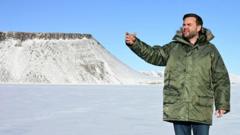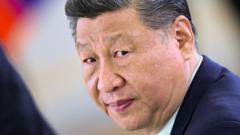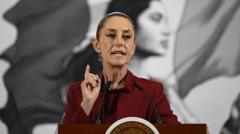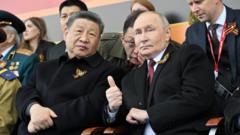As Greenlandians navigate their desire for independence, US Vice-President JD Vance's recent visit to the island underscores a potentially tense dynamic between local aspirations and external pressures.
**JD Vance's Visit to Greenland: Imperatives for Independence and Balancing Partnerships**

**JD Vance's Visit to Greenland: Imperatives for Independence and Balancing Partnerships**
JD Vance emphasizes US support for Greenland amid fears of China while residents push for autonomy from Denmark.
The night sky glistened over Nuuk, Greenland’s capital, as JD Vance, the US Vice-President, made an appearance that would spark significant debate on the island's future. During his visit to crucial military installations in the Arctic, Vance conveyed the urgency of recognizing shifting global influences, particularly from China, while attempting to reassure Greenlanders that military intervention was not on the agenda. He stated, "We need to wake up from a failed, 40-year consensus" regarding threats to the region, urging local officials to reconsider their ties with Denmark and potentially lean towards the US for support and security.
However, not all residents welcomed this sentiment. Following Vance’s remarks, which were perceived by some as a veiled threat, a local artist voiced her concerns over the tone of Vance's message, which seemed to clash with the values of Greenland’s indigenous population that cherish collaboration and cultural respect. Polls indicate a significant lack of enthusiasm towards aligning with the US, with merely 6% of locals supporting the notion of American annexation.
While Greenland is on a cautious path towards independence from Danish oversight, the US’s long-term intentions remain ambiguous. Vance suggested that America respects Greenland’s self-determination and would support its aspirations, rather than pursuing an outright acquisition—asserting that the US is the only nation capable of safeguarding Greenland’s sovereignty. This message, however, contrasts with the more aggressive rhetoric of the Trump administration that has seemingly sparked a sense of urgency among Greenland’s officials.
This complex political landscape is compounded by the need for Greenland to build a robust economy to sustain its autonomy while simultaneously advocating for protection from exploitation by external forces. Despite the underlying goodwill towards improving relations with the US, there is a growing sentiment among the populace that they are being pressured rather than consulted.
In light of recent protests which led to the cancellation of a planned cultural tour by Vance’s wife, Usha, the dynamics of their engagement might necessitate a more respectful approach, favoring dialogue over demands. As Greenlanders continue to navigate their own path to self-governance, their leadership must balance international relations with the preservation of their culture and autonomy.
As events unfold, Vance’s visit will undoubtedly be a pivotal chapter in the ongoing narrative of Greenland’s ambitions and the interplay of foreign interests in the Arctic region.
However, not all residents welcomed this sentiment. Following Vance’s remarks, which were perceived by some as a veiled threat, a local artist voiced her concerns over the tone of Vance's message, which seemed to clash with the values of Greenland’s indigenous population that cherish collaboration and cultural respect. Polls indicate a significant lack of enthusiasm towards aligning with the US, with merely 6% of locals supporting the notion of American annexation.
While Greenland is on a cautious path towards independence from Danish oversight, the US’s long-term intentions remain ambiguous. Vance suggested that America respects Greenland’s self-determination and would support its aspirations, rather than pursuing an outright acquisition—asserting that the US is the only nation capable of safeguarding Greenland’s sovereignty. This message, however, contrasts with the more aggressive rhetoric of the Trump administration that has seemingly sparked a sense of urgency among Greenland’s officials.
This complex political landscape is compounded by the need for Greenland to build a robust economy to sustain its autonomy while simultaneously advocating for protection from exploitation by external forces. Despite the underlying goodwill towards improving relations with the US, there is a growing sentiment among the populace that they are being pressured rather than consulted.
In light of recent protests which led to the cancellation of a planned cultural tour by Vance’s wife, Usha, the dynamics of their engagement might necessitate a more respectful approach, favoring dialogue over demands. As Greenlanders continue to navigate their own path to self-governance, their leadership must balance international relations with the preservation of their culture and autonomy.
As events unfold, Vance’s visit will undoubtedly be a pivotal chapter in the ongoing narrative of Greenland’s ambitions and the interplay of foreign interests in the Arctic region.






















